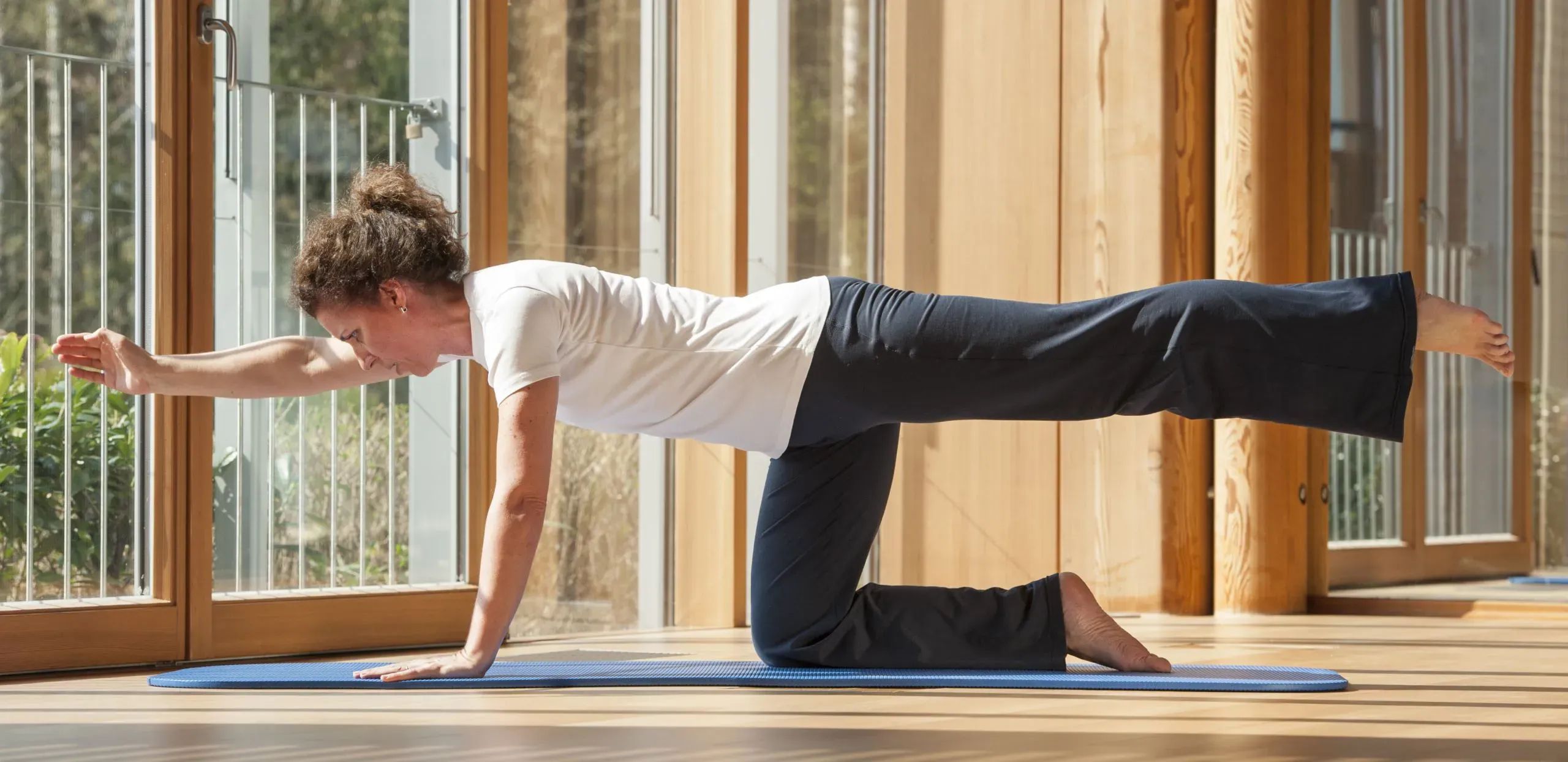Spine gymnastics
Holistic health gymnastics with breathing, stretching, relaxation and muscle building
| Various types of gymnastics: |
| Strenghen |
| Strength exercises are especially important for the spine. The majority of people with vertebral problems have low strength levels. Training goal is to have a strong and thick clearly recognizable musculature. |
| Functional gymnastics - in general |
| The functional gymnastics serves to improve all movement functions and to maintain the performance into old age. The focus of functional gymnastics lies on strengthening, relaxing, stretching, mobilizing and coordination. |
| Relaxation exercises |
| Tense and hardened muscles are a constant or frequent strain for many people. Therefore, it is necessary to relax and release tense muscles that may be shortened or appear shortened. |
| Mobilize |
| By mobilizing, we mean a conscious movement of the spine and joints. These movements (to get-to-move or to make mobile) have to be done without force and without tension, so that the joints can develop their range of motion or be expanded again in the case of restrictions. |
| Coordination weakness |
| The balance, body control and free movement of the body are trained. Coordination exercises with music are also a very effective motivational factor and contribute to the strengthening of the cardiovascular system and the condition. |
| The Z syndrom |
| This strong habitual malposition is caused by a yielding or sinking of the body in the three areas pelvis, upper body, head: when standing, the pelvis is tilted forward, the upper body evades backwards, the head is held too far forward. It creates the impression of a Z-shaped posture. |
| The round back |
| The round back is characterized by the increased kyphosis (bending to the rear) of the thoracic spine. The curvature of the back may have a long-arched or a short-arched shape and be associated with a growth disorder (Scheuermann's disease). |
| The hollow back |
| The increased hollows position is a common habitual malposition. This attitude is triggered by a tilting of the pelvis - sometimes in conjunction with a withdrawal of the upper body and muscle shortening. This creates the amplified waveform the lumbar spine - the well-known hollow cross. |
| Skoliosis |
| As scoliosis a slight lateral deviation of the spine is called, the causes of which lie in the muscular weakness and a habitual malposition, but can also be the precursor to a stronger spine curvature. |
